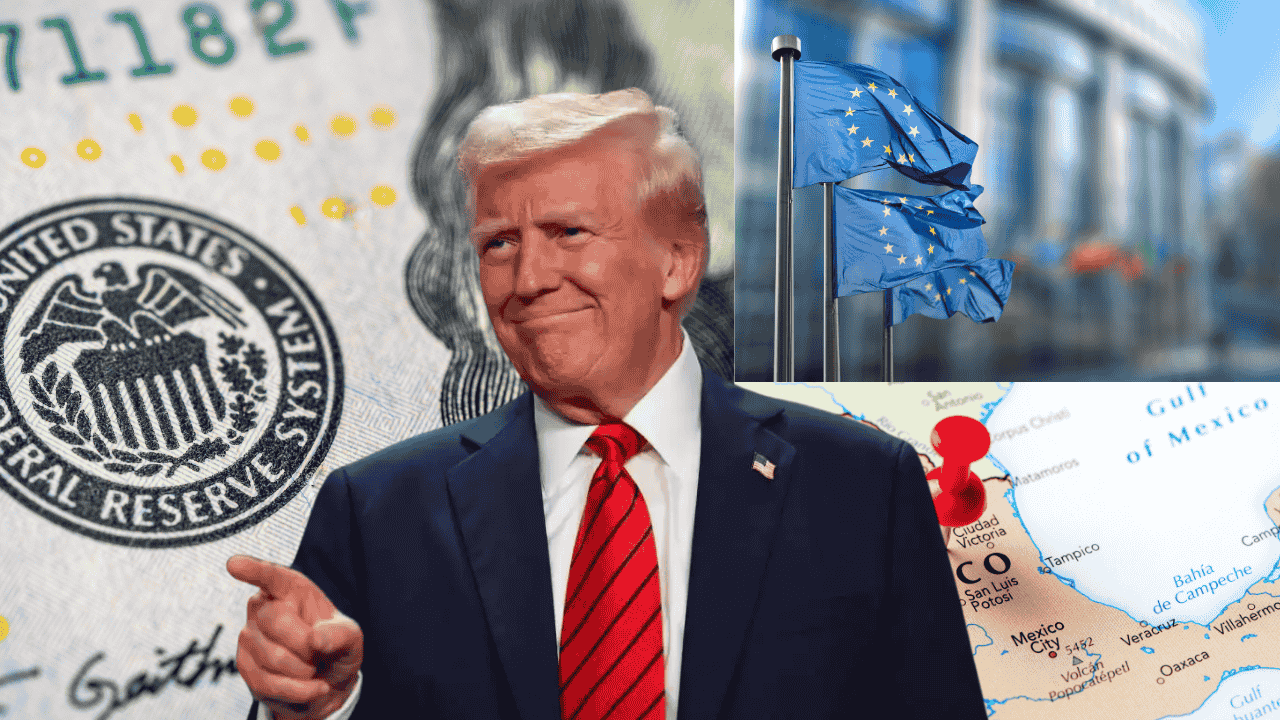President Donald Trump announced on Friday that his administration will impose new tariffs of 30% on a wide range of goods imported from Mexico and the European Union. His move has triggered warnings of possible retaliation from U.S. trading partners and raised fears of renewed trade conflicts. The tariffs are scheduled to take effect on August 1.
Key Takeaways
- President Trump has announced 30% tariffs on goods from the European Union and Mexico, citing unfair trade practices and Mexico’s role in cross-border fentanyl trafficking.
- The tariffs are set to take effect on August 1, prompting warnings of possible retaliation and concern over strained trade ties.
- U.S. lawmakers and business groups remain divided, with some backing the move while others warn it may drive up costs and risk supply disruptions.
- Neither the legal basis nor the exact list of targeted products has been released, leaving uncertainty as diplomatic talks continue.
In letters released by the White House, addressed separately to EU Commission President Ursula von der Leyen and Mexican President Claudia Sheinbaum, Trump said the new tariffs were being imposed in response to what he described as long-standing trade imbalances and, in the case of Mexico, the country’s failure to curb the flow of fentanyl and other synthetic drugs into the United States.
He framed the decision as part of his broader push to protect American industries and workers.
Tariff move aimed at trade imbalances and fentanyl crisis
He accused the EU of maintaining unfair trade practices that have created what he called a “massive trade deficit” with the U.S., while criticizing Mexico for failing to take adequate action against cross-border drug trafficking. “These tariffs are a long-overdue correction,” Trump wrote in one of the letters, asserting that American businesses have been undercut by foreign producers for too long.
EU and Mexico push back, warn of retaliation
The decision marks one of the most aggressive trade steps Trump has taken in his second term and it has already prompted strong responses.
A spokesperson for von der Leyen said that the European Commission was “deeply concerned” by the move and warned that the EU would not hesitate to take retaliatory measures if necessary, according to PBS NewsHour. “We are examining all options, including the possibility of proportional countermeasures,” the statement said.
Mexico’s foreign ministry said it “regretted” the announcement and emphasized that the country has been a cooperative partner in fighting the illegal drug trade. President Sheinbaum has not publicly responded yet, but her office issued a brief statement saying Mexico remains committed to a constructive trade relationship with the United States, as reported by Investopedia.
While the administration has not released full details on which products will be targeted under the new tariffs, analysts expect the duties to cover major industrial and agricultural goods, including steel, machinery, and vehicles. In the past, similar trade actions by the Trump administration triggered tit-for-tat tariffs on American products such as bourbon, motorcycles, jeans, and agricultural exports.
Trade experts say the timing and scale of the tariffs could carry economic consequences beyond the U.S. border. “This is not just a political signal,” said one international trade analyst based in Brussels. “These tariffs, if implemented, could disrupt major transatlantic supply chains, increase input costs for U.S. manufacturers, and provoke a serious diplomatic rift with allies.”
U.S. industries and lawmakers split on impact
The announcement has left American business groups and lawmakers divided. Some industry representatives have warned that the tariffs could drive up production costs, disrupt imports of essential goods, and create uncertainty for sectors that rely heavily on cross-border trade.
Manufacturing firms that depend on steel and aluminum imports from Europe and Mexico are particularly concerned. A senior executive at a U.S.-based auto parts supplier said the new tariffs could “make it harder to compete and squeeze margins further at a time when inflation and borrowing costs are already high.”
On Capitol Hill, the response broke largely along partisan lines. Several Republican lawmakers expressed support, saying the move sends a clear message that the U.S. will no longer tolerate trade practices that disadvantage American producers. Others, however, cautioned that the tariffs could provoke retaliation, potentially leading to a broader trade conflict.
Democratic leaders criticized the decision, arguing that the measure may ultimately harm U.S. consumers and strain diplomatic ties with key allies.
In a brief press call, Senator Chris Murphy said the administration was “ignoring the economic realities of global trade” and added that a more targeted negotiation strategy would have been better. Meanwhile, Senator Josh Hawley defended the move, calling it “a necessary correction to years of trade abuse.”
No details yet on legal basis or product scope
As of Friday evening- July 12th, the Trump administration had not specified the legal authority under which the new tariffs would be imposed. During his presidency in the previous term, Trump had used Section 232 of the Trade Expansion Act 1962, which allows tariffs on national security grounds, and Section 301 of the Trade Act of 1974, which targets unfair trade practices.
Whether either will be used again remains unclear. Trade experts say the lack of legal detail could delay implementation or invite court challenges from affected companies.
There was also no official release listing which specific products or categories would be subject to the new 30% rate. Analysts familiar with past tariff regimes expect a broad coverage, but say exemptions or staged rollouts are possible depending on how talks progress before the August 1 deadline.
The EU and Mexican governments have both asked for clarification and have urged Washington to return to the negotiation table.
Europe and Mexico weigh their options as clock ticks
The European Commission and several EU member states are expected to meet early next week to prepare their official response. Trade officials have said that while they are open to discussion, they will defend the EU’s economic interests. Some European countries, including Ireland, Germany, and France, have warned that the tariffs could affect tens of thousands of jobs in export-dependent sectors.
Mexico, too, has said it will explore “all diplomatic and legal avenues” to address the issue. President Sheinbaum has remained measured in her response, signaling a preference for avoiding escalation. Still, her cabinet has held emergency talks with U.S. officials and trade advisors to assess the potential fallout.
With just under three weeks before the tariffs are set to begin, businesses on both sides of the Atlantic are watching closely. Importers, exporters, and logistics firms have already begun adjusting orders and reviewing contingency plans in case prices jump or trade routes shift suddenly.
A tense moment in an already fragile global economy
This tariff decision lands at a time when global markets are still adjusting to post-pandemic recovery, supply chain rebalancing, and rising geopolitical tensions. Economists say even the threat of large-scale tariffs can rattle investors, pressure currencies, and increase commodity prices.
Although the Trump admin insists the measure will strengthen U.S. economic security, several trade experts say the risk of unintended consequences is high. Some believe the decision may push U.S. allies closer to alternate trade partnerships or revive WTO disputes that have long sat dormant.
A former USTR official said Friday that the administration “should tread carefully,” noting that even justified concerns about trade imbalances should be handled with a degree of strategic diplomacy.
Related Articles
What's Next?
You Might Also Like
In our commitment to ensuring accuracy and credibility, we prioritize the use of primary sources to support our reporting. This includes white papers, government data, original reporting, and interviews with industry experts. We also reference original research and findings from reputable publishers when appropriate. To learn more about the standards we uphold in producing accurate and unbiased content, please refer to our editorial policy.


















